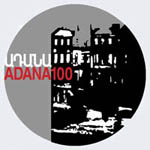 April 20, 2009
April 20, 2009
Erebuni-plaza hotel
Erebuni hall
PROGRAM
9:00-10:00 – Registration of participants of the conference
10:00-10:30 – Plenary session
Prayer
Opening Speech
Hayk Demoyan, Director of the Armenian Genocide Museum and Institute (AGMI)
Speeches
• Hranush Hakobyan The Minister of Diaspora of RA
• Spartak Seyranyan The Minister of Education & Science of RA
• Vladimir Barkhudarian The academician-secretary of NAS RA
10:30 – 12:30 – The First Panel /moderated by Richard Hovhannisian, Professor of UCLA/
1. Harutyun Kevorkian (Nubaryan library, Paris, France) The political evaluation of Cilician Massacres by Young Turks government
2. Hamit Bozarslan (Ecole des Hautes Etudes en Sciences Sociales, Paris, France)1909 Context. Unionism, nationalism and violence
3. Ruben Safrastyan (Institute of Oriental Studies)The massacres of Adana vilayet as a pattern of genocidal policy
4. Hayk Demoyan (AGMI) Cilician tragedy. observations on several psychological aspects of the massacre
5. Claude Mutafian (Paris 13 University, France) Cilicia and cilicians in the travel notes of European travelers (the end of XIV-the beginning of XX century)
6. Yve Ternon (University Paris IV Sorbonne, France) Cilicia, 1909. If it was possible to prevent the threat of Genocide?
Questions, Comments, Discussion
12:45-13:00 – Coffee break
13:00-15:00 – The Second Panel /moderated by Dr. Hayk Demoyan, Director of AGMI/
1. Stephan Astourian (University of California at Berkeley) The Adana Massacres: Ottoman Turkish Interpretations and Historical Facts
2. Suren Manukyan (Armenian Genocide Museum & Institute) The life in Adana at the beginning of 20 century: the Cilician model of national modernization
3. Hasmik Stepanyan (Institute of Oriental Studies) The reflections on Adana Massacres in turkish literature with Armenian character
4. Rubina Peroomian (University of California Los-Angeles, USA) The poetics of violence in the literary responses on Adana massacres
5. Artem Ohanjanyan (Vienna, Austria) The massacres in Adana in the Austro-Hungarian documents
6. Eva Merenic (Corvinus University of Budapest, Hungary) The tragedy of Cilicia in the Austro-Hungarian media sources
7. Vahan Ohanyan (Mkhitarists Congregation of St.Lazzaro, Italy) Adana massacres in the American media coverage
Questions, Comments, Discussion
15:15-16:00 – Lunch
10:30 – 12:30 – The Third Panel /moderated by Dr. Prof. Ruben Safrastyan, Director of Institute of the Oriental Studies of the NAS of RA/
1. Varujan Poghosyan (Institute of History)The book of Brezol “The Turk passed from here…” as an important source of Adana Massacres
2. Arpine Bablumyan (Armenian Genocide Museum & Institute)The demographic consequences of Cilician massacres
3. Tatevik Ghaltakhchyan (Armenian Genocide Museum & Institute)First responses of Adana massacres in Western Armenian press
4. Aram Arkun (Krikor and Clara Zohrab Information Center, USA) The self-defense of Dortyol and Cilician Armenians during the 1909 massacres
5. Seda Parsamyan (Armenian Genocide Museum & Institute) The mechanism of implementation of cultural genocide and in Adana and adjacent regions during 1909 massacres and its consequences
6. Harutyun Selimyan (Armenian Protestant Church of Syria)The Loses of the Armenian Evangelical Church during the Adana massacres
Questions, Comments, Discussion
April 21, 2009
The Armenian Genocide Museum-Institute
Komitas Hall
10:00-10:30 – Registration of participants of the conference
10:30 – 12:30 – The Fourth Panel /moderated by Dr. Suren Manukyan, Deputy Director of AGMI/
1. Vahakn Dadrian (Zoryan Institute, USA)The Twin 1909 Adana Massacres Revisited
2. Verjine Svazlian (Institute of Archeology and Ethnography) The Adana massacre and the popular memory and songs
3. Aramayis Baloyan (Matenadaran - Institute of Ancient Manuscripts) The Cilician massacres in the responses of the Italian diplomatic sources
4. Reverend Father Gevorg Saroyan (Vazgenyan Theological Academy) The losts of Armenian Holy Apostolic Church during the Armenian Genocide /case of Adana/
5. Ani Voskanyan (Armenian Genocide Museum & Institute) – On the participation of the Turkish army in Adana massacres
6. Anna Aleksanyan (Armenian Genocide Museum & Institute) The reflection of the Adana massacres in the correspondence and literary works of the Western Armenian female intellectuals
7. Aram Mirzoyan (Armenian Genocide Museum & Institute) – Orphan care activities after Adana massacres (1909-1912)
Questions, Comments, Discussion
CLOSING SESSION
19:00 - Cultural Event – National Chamber Orchestra of Armenia





